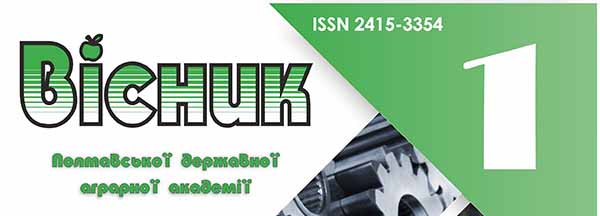INFLUENCE OF IMB B-7836 АZOTOBACTER CHROOCOCCUM TOGETHER WITH POLYSACCHARIDE-PROTEIN COMPLEX ON CUCUMBER YIELDING CAPACITY
DOI:
https://doi.org/10.31210/visnyk2021.04.09Keywords:
Azotobacter chroococcum, polysaccharide-protein complex (PPC), yielding capacity, yield structureAbstract
At present, the study of the impact of microbial preparations based on agronomically useful microorganisms on the productivity of vegetable crops is a topical direction. Azotobacter chroococcum is one of the bacterial species that can interact with plants. Due to the fixation of atmospheric nitrogen and production of physiologically active compounds, this diazotroph can have a positive effect on crops, in particular vegetables. The introduction of Azotobacter into plant rhizosphere occurs by seed treatment, but most bacterial cells die under the action of environmental factors within the period from bacterization to sowing seeds into the soil. It is possible to increase the viability of microorganisms using compounds of different chemical nature. The objective of our work was to study the efficacy of IMB B-7836 A. chroococcum under the action of polysaccharide-protein complex (PPC). The task was to determine the impact of bacterization with IMB B-7836 A. chroococcum together with PPC on the yielding capacity and yield structure of cucumber. The research results show that bacterization with the simultaneous use of polysaccharide-protein complex contributes to 50.8 t/ha of cucumber yielding capacity, which exceeds both the control variant and the variant without the use of PPC. Early bacterization with the addition of PPC contributed to the yield of 47.7 t/ha, which was 29.6 % higher than the control variant and 12.9 % higher than under cucumber bacterization without the use of PPC. The analysis of the yield structure has shown that there are more second fraction pickling cucumbers, as a result of which there is an increase in the cucumber productivity. The first fraction pickling cucumbers are less than the second (22.7 %), and there are the fewest young fruits (7.7 %). The use of PPC enables to conduct early treatment of cucumber seeds with azotobacter without reducing the effectiveness of bacterization. For example, the largest proportion of the second fraction pickling cucumbers (75.5 %) was in the variant with pre-sowing bacterization with IMB B-7836 A. chroococcum simultaneously with applying PPC. The yield of the second fraction pickling cucumbers under early bacterization of cucumber seeds with IMB B-7836 A. chroococcum simultaneously with PPC was 35.54 t/ha, which was 12.7 % higher than in the variant with early bacterization of cucumber seeds with IMB B-7836 A. chroococcum without PPC, but by 8.5 % lower than in the variant with pre-sowing bacterization using PPC.

 Creative Commons Attribution 4.0 International Licens
Creative Commons Attribution 4.0 International Licens